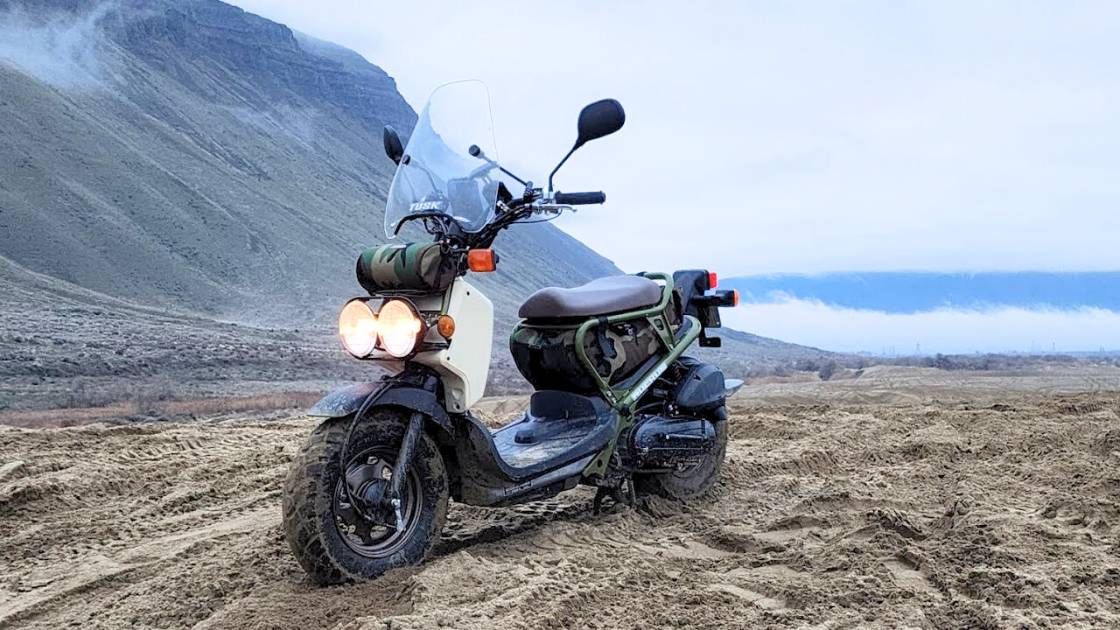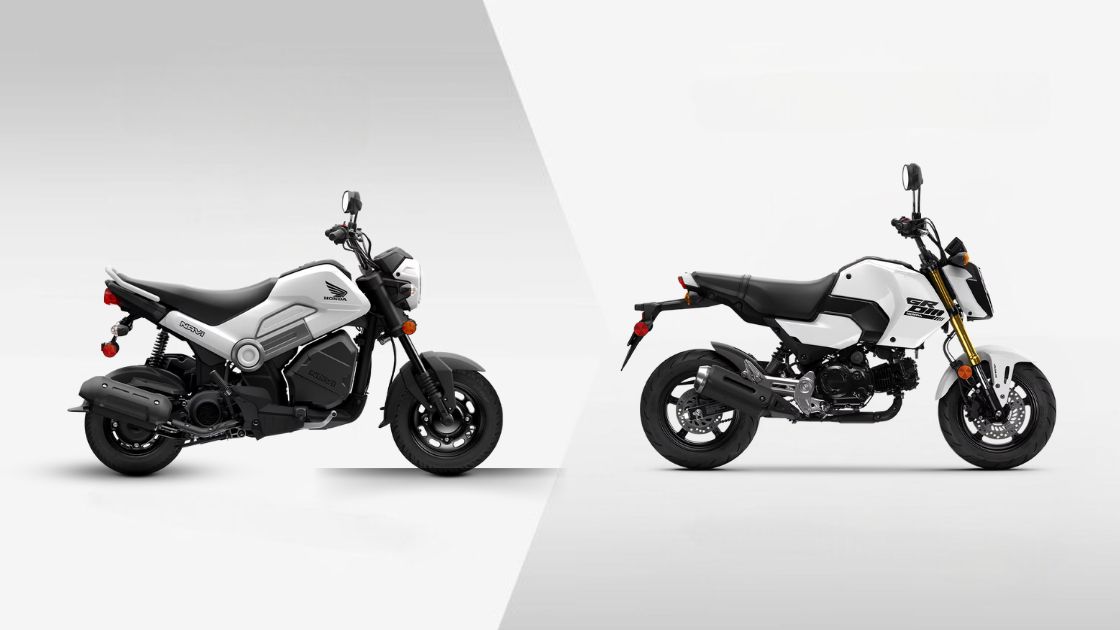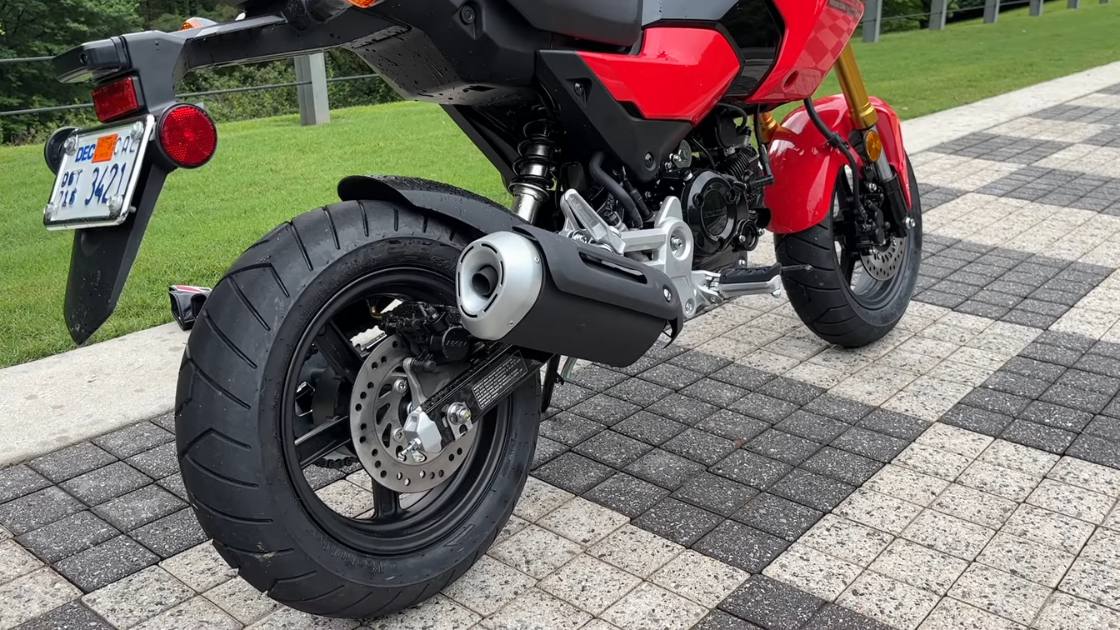Why would someone want to take a Honda Ruckus off-road? The answer is simple: adventure. Off-road Ruckus builds let you explore trails, dirt roads, and rugged terrains that a standard scooter can’t handle. The Ruckus has gained a cult following among scooter enthusiasts who love customizing it for unique purposes, including off-road builds. Off-road modifications improve the Ruckus’s durability, grip, and performance. Whether you’re tackling sandy paths or rocky trails, a well-built off-road Ruckus offers a fun and practical way to enjoy the outdoors. Plus, customizing your Ruckus is a rewarding experience that reflects your personality and needs.
Table of Contents
ToggleAssessing the Honda Ruckus for Off-Road Use
Stock Capabilities and Limitations
Let’s start by understanding what the Honda Ruckus can and cannot do in its factory form. The Ruckus is powered by a reliable 49cc liquid-cooled, single-cylinder engine. This makes it efficient and perfect for city commuting. Its lightweight frame (around 194 lbs) provides excellent maneuverability, which is why many riders love it for urban use.
However, the Ruckus’s stock setup isn’t built for off-road challenges. The suspension is basic, designed for smooth roads, not rugged trails. The tires, while decent for pavement, lack the tread depth needed for dirt, sand, or mud. The ground clearance is also limited, making it vulnerable to damage from rocks or uneven surfaces. Additionally, the 49cc engine, though dependable, doesn’t offer the torque required for steep inclines or loose terrain.
Setting Realistic Expectations
Before diving into off-road modifications, it’s essential to manage your expectations. The Honda Ruckus, even after significant upgrades, won’t rival a full-fledged dirt bike or ATV. Its small engine and frame size mean it will always have limitations compared to larger off-road vehicles.
That said, the Ruckus can become an off-road adventure machine in its own right. It’s perfect for light trail riding, beach cruising, or exploring rural backroads. If you enjoy a blend of simplicity, fun, and customization, the Ruckus can deliver a unique off-road experience that’s both practical and enjoyable.
Essential Modifications for Off-Road Performance
Tires and Wheels
One of the first things to address in your off-road Honda Ruckus build is the tires. The stock tires are designed for pavement, so upgrading to off-road-specific tires is a must.
- Selecting Appropriate Off-Road Tires: Tires like the Maxxis M6024 are a popular choice among Ruckus enthusiasts. These tires provide deeper tread patterns for better grip on dirt, mud, and loose gravel. For sandy terrain, you might consider a knobby tire that offers superior traction in soft soil.
- Wheel Adjustments: The Ruckus’s stock wheels can usually accommodate most off-road tires, but some riders opt for custom wheels. This can improve stability and ensure better performance on uneven trails.
Suspension Upgrades
The suspension on a stock Ruckus is basic and designed for smooth urban roads. To handle the bumps and dips of off-road trails, you’ll need to upgrade both the front and rear suspension.
- Rear Shock Enhancements: Adding a high-performance shock like the Kitaco rear shock improves ride comfort and stability. This helps absorb impacts from rocks, roots, and other obstacles.
- Front Suspension Considerations: Although rear shocks often get more attention, upgrading the front suspension can also improve handling. Fork upgrades or spring kits can provide a smoother ride on rough terrain.
Engine and Performance Tweaks
While the 49cc engine is reliable, it needs some help to perform well off-road. Enhancements can increase torque and acceleration, making it more capable on trails.
- Variator and Roller Weight Modifications: Adjusting the variator and roller weights allows for better power delivery. For off-road use, heavier rollers can help improve low-end torque, which is crucial for climbing hills.
- Air Intake and Exhaust Systems: Upgrading to a high-flow air filter, like a K&N filter, and installing a performance exhaust system can boost engine efficiency and power. These changes also improve throttle response, which is essential for navigating tricky terrain.
Protective Additions
Off-road trails can be tough on your scooter. Adding protective elements ensures the Ruckus can withstand rough conditions.
- Skid Plates: Installing a skid plate protects the undercarriage and engine components from rocks and debris.
- Handguards and Frame Guards: Handguards protect your hands from branches and flying debris, while frame guards shield the body from scratches and dents.
Enhancing Utility and Storage
Rear and Front Racks
When taking your Honda Ruckus off-road, having the ability to carry extra gear is essential. Off-road adventures often require tools, spare parts, and even camping equipment. Adding storage racks is a practical solution.
- Rear Racks: Installing a sturdy rear rack is a popular upgrade. Options like the Cycle Racks Rear Rack are durable and designed to hold heavier loads, such as a small backpack or tool kit. They’re built for rough conditions and won’t easily bend or break.
- Front Racks: A front rack complements the rear rack, offering additional storage. It’s great for carrying lightweight items like water bottles, maps, or snacks. Look for racks with a secure attachment system to handle the vibrations of off-road trails.
Under-Seat Storage Solutions
While the Ruckus has some under-seat storage, it’s limited in space. For off-road builds, optimizing this area can make a big difference.
- Expandable Storage Options: You can add a small storage box or bag under the seat to hold essential items like a tire repair kit, extra fuel, or basic tools.
- Weatherproof Solutions: Consider using waterproof storage bags or cases to protect your gear from mud, water, and dust.
Auxiliary Mounts and Accessories
Additional mounts can make your off-road adventures more convenient and enjoyable.
- Phone or GPS Mounts: A secure mount for your phone or GPS device ensures you can navigate unfamiliar trails without stopping.
- Accessory Lighting: Installing extra LED lights or a headlamp mount can improve visibility during early morning or evening rides.
Balancing Utility and Weight
While adding utility features is essential, it’s important to strike a balance. Overloading your Ruckus can impact its performance and maneuverability. Prioritize lightweight and functional accessories to keep your build efficient.
Legal and Safety Considerations
Compliance with Local Regulations
Before modifying your Honda Ruckus for off-road use, it’s essential to understand the legal requirements in your area. Different regions have specific rules regarding modifications, especially when it comes to vehicles originally intended for road use.
- Street-Legal Modifications: If you plan to use your off-road Ruckus on public roads as well as trails, ensure that your upgrades meet street-legal requirements. For example, many areas require working headlights, turn signals, and a horn.
- Emissions Standards: Some performance upgrades, like aftermarket exhaust systems, may affect emissions. Check whether these modifications comply with local environmental laws.
- Registration and Insurance: In some areas, significant modifications might require re-registration or adjustments to your insurance policy. Verify this with your local DMV or equivalent authority.
Safety Gear Recommendations
Riding off-road comes with unique challenges and risks. Equipping yourself with the right safety gear is just as important as modifying your Ruckus.
- Helmet: A DOT-approved off-road helmet is non-negotiable. It provides the protection you need against impacts and flying debris.
- Riding Gloves: Durable gloves with added grip ensure better control of your scooter while protecting your hands from cuts and blisters.
- Protective Clothing: Invest in padded riding jackets and pants designed for off-road use. These garments often include armor inserts for added safety.
- Boots: Sturdy, over-the-ankle riding boots offer ankle support and protect against injuries from rocks, branches, or falls.
- Eye Protection: Goggles or a visor shield your eyes from dust, mud, and insects, which are common on off-road trails.
Trail Safety Tips
Safety isn’t just about gear; it’s also about how you ride. Keep these tips in mind:
- Ride Within Your Limits: Don’t push your Ruckus—or yourself—beyond what’s safe for the terrain or conditions.
- Trail Etiquette: Be courteous to other riders, hikers, or vehicles you encounter on trails. Yield when necessary, and avoid damaging the environment.
- Emergency Preparedness: Always carry a first-aid kit, a charged phone, and basic tools. Let someone know your route before heading out.
Real-World Examples and Case Studies
Featured Builds
Seeing real-life examples of Honda Ruckus off-road builds can inspire and guide your own project. Many enthusiasts have transformed their scooters into rugged, off-road-ready machines by incorporating creative modifications. Here are a few standout builds:
- Bold Overland Honda Ruckus: This build is a testament to what’s possible with the Ruckus. Equipped with knobby tires, upgraded suspension, and a robust skid plate, this Ruckus is designed to tackle rocky trails and uneven paths. The owner also added auxiliary LED lights for better visibility and a rear rack for carrying camping gear.
- Custom Trail Blazer Build: Another excellent example features a Ruckus with reinforced handlebars, a performance exhaust system, and a reworked variator for improved torque. This build focuses on balancing utility and aesthetics, showing that you can have both function and style.
Owner Testimonials
Hearing from riders who’ve completed off-road Ruckus builds can provide valuable insights. Here are some key takeaways from experienced Ruckus enthusiasts:
- Performance Improvements: Many riders report that upgrading the variator and adding off-road tires make a noticeable difference in handling and power. One rider shared how these changes allowed them to climb steep dirt paths with ease.
- Challenges Faced: Some owners have noted that the small engine size requires careful tuning to handle rugged trails. They recommend regular maintenance and being prepared for occasional breakdowns in tough conditions.
- Personal Touch: Enthusiasts emphasize that every Ruckus build is unique. Whether it’s a choice of paint, storage solutions, or accessories, these personal touches make each project special.
Inspiration for Your Build
Use these examples as a starting point for your own Honda Ruckus off-road project. Remember, the beauty of the Ruckus lies in its customizability. Whether you’re focused on functionality, aesthetics, or both, these real-world builds prove that the possibilities are endless.
Maintenance and Upkeep
Regular Inspection Routines
Once your Honda Ruckus is modified for off-road use, regular maintenance becomes essential to keep it in peak condition. Off-road riding exposes your scooter to harsh conditions, so proactive care can prevent costly repairs.
- Tire Checks: Inspect the tires for wear, cuts, or embedded debris after each ride. Off-road tires take more abuse than standard ones, so ensure they maintain adequate tread depth and proper inflation.
- Suspension Maintenance: The upgraded suspension system needs periodic checks. Look for signs of wear or leaks in the shocks, and tighten any loose bolts.
- Braking System: Off-road terrain can quickly wear down brake pads and clog the system with dirt. Clean the brakes regularly and replace pads as needed to maintain reliable stopping power.
- Chain and Drivetrain: If your Ruckus uses a chain drive, clean and lubricate it often to prevent rust and ensure smooth operation. Inspect the variator and rollers for signs of wear, especially if you’ve made performance modifications.
Common Issues and Troubleshooting
Off-road conditions can cause specific problems. Knowing what to expect and how to address these issues will save you time and frustration.
- Engine Overheating: The Ruckus’s small engine can overheat during extended off-road use, especially in hot weather. Upgrading to a high-performance radiator or installing a temperature gauge can help you monitor and manage heat levels.
- Dust and Dirt Buildup: Air intake and carburetor systems can become clogged with dust. Use a high-flow air filter like a K&N filter and clean it regularly to maintain optimal engine performance.
- Loose or Damaged Components: Off-road vibrations can loosen screws, bolts, and other components. Perform a full inspection after every ride, tightening or replacing any loose or damaged parts.
Preventive Measures
Taking preventive steps will help extend the life of your off-road Ruckus and ensure a better riding experience.
- Protective Coatings: Apply anti-rust coatings to exposed metal parts, especially if you ride in wet or muddy conditions.
- Regular Cleaning: Wash your Ruckus thoroughly after each ride to remove mud, dirt, and grime. Focus on hard-to-reach areas like the undercarriage and suspension.
- Oil and Fluids: Change the engine oil and coolant more frequently than you would with a road-only Ruckus. Off-road conditions put extra strain on these systems, so keeping them fresh is crucial.
Building a Maintenance Kit
Carry a basic maintenance kit during your rides. Include tools like a wrench set, tire repair kit, chain lubricant, and a small pump. Having these items on hand can help you address minor issues on the trail.
Conclusion
Transforming a Honda Ruckus into an off-road adventure machine is an exciting and rewarding project. With the right modifications, you can take this humble scooter from city streets to rugged trails. From upgrading the tires and suspension to adding protective gear like skid plates and handguards, every change enhances its off-road capabilities. Performance tweaks, such as variator adjustments and engine upgrades, make it better suited for tackling challenging terrains.
However, the journey doesn’t end with the modifications. Regular maintenance and smart riding practices are essential to keep your off-road Ruckus in top shape and ensure a safe, enjoyable experience.
Building an off-road Honda Ruckus is more than just a technical challenge—it’s a personal adventure. Every upgrade, adjustment, and accessory reflects your unique style and needs. Whether you’re seeking lightweight trail fun or practical utility, the Ruckus can deliver an experience unlike any other.
I encourage you to start small and build as you go. Tackle one modification at a time, learn from the process, and enjoy the transformation. The Ruckus community is a fantastic resource for tips and support, so don’t hesitate to connect with fellow enthusiasts.
Remember, the most important part of any off-road build is the journey it takes you on. So gear up, head out, and make your off-road adventures unforgettable.
Frequently Asked Questions
How much does it cost to build a Honda Ruckus for off-road use?
Building a Honda Ruckus for off-road use can cost between $500 and $2,000 or more. Basic upgrades like suspension, tires, and frame reinforcement cost about $500-$1,000. More advanced upgrades, like engine tuning and performance kits, can add another $500-$1,000.
What are the best tires for a Honda Ruckus off-road build?
Knobby tires are the best choice for a Honda Ruckus off-road build. They grip better on loose dirt, gravel, and sand, which improves stability and control. Wider tires also help with balance and handling.
Can a Honda Ruckus handle rough terrains?
Yes, a Honda Ruckus can handle rough terrains if you make the right changes. You should upgrade the suspension, add off-road tires, strengthen the frame, and tune the engine.
What performance upgrades are recommended for a Honda Ruckus off-road build?
For better performance, you should tune the engine with a better exhaust, air intake, and carburetor. Upgrading the variator and drive belt will also help with speed and handling on rough terrains.
How can I protect my Honda Ruckus during off-road adventures?
To protect your Honda Ruckus, install skid plates to shield the engine and frame from debris. Add handguards to protect your hands from branches and rocks. Engine guards can help prevent damage if the bike falls.
What kind of tires should I use for off-road riding?
Tires like the Maxxis M6024 or Michelin Reggae are excellent choices for off-road Honda Ruckus builds. These tires provide better grip and durability on loose terrain, mud, and dirt paths.
How do I protect my Ruckus from damage during off-road rides?
Installing protective components such as skid plates, handguards, and frame guards is key. These additions shield the Ruckus from rocks, debris, and falls. Regular cleaning and applying anti-rust coatings also help maintain its condition.










